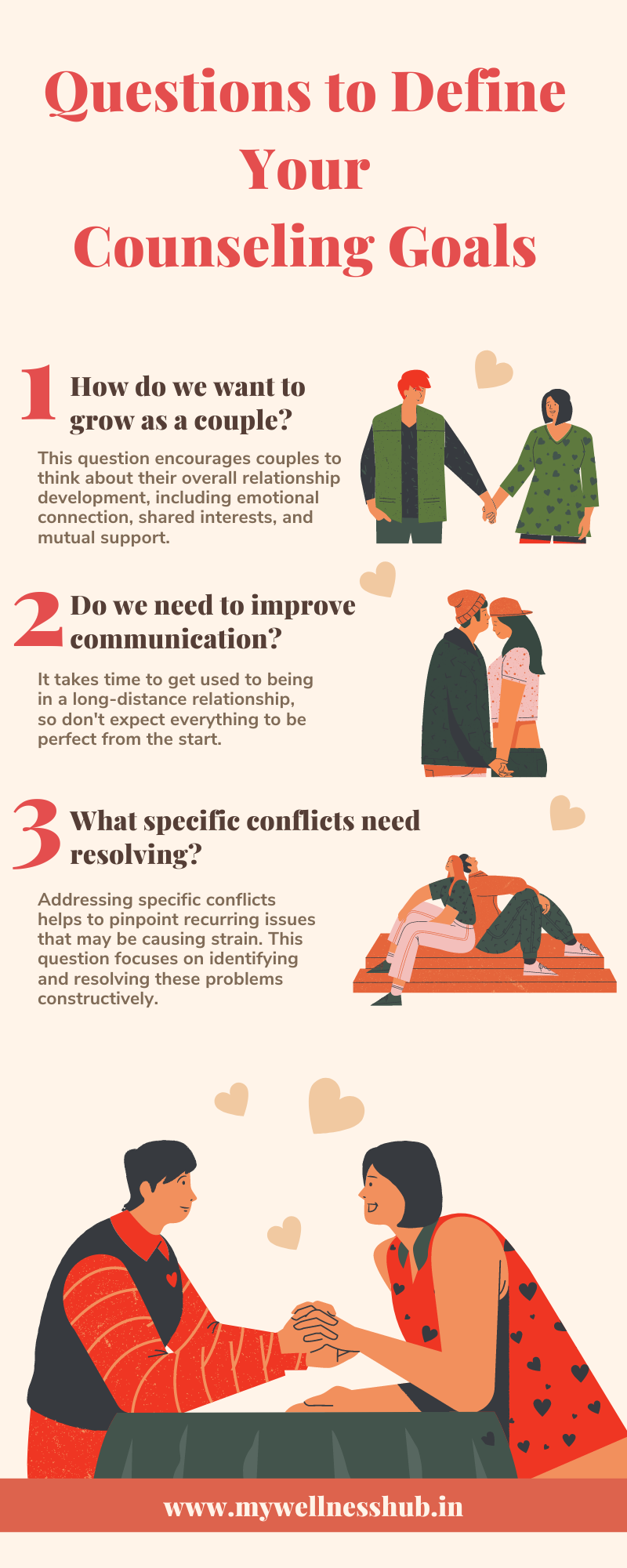The 7-Minute Rule for Aim Point Counseling
Not known Facts About Aim Point Counseling
Table of ContentsGetting My Aim Point Counseling To WorkThe 3-Minute Rule for Aim Point CounselingExamine This Report on Aim Point CounselingA Biased View of Aim Point CounselingNot known Facts About Aim Point CounselingThe 8-Minute Rule for Aim Point Counseling
The longitudinal style entails a pre-treatment study and 2 follow-up surveys at 3- and 12-months post-intervention. The research study is embeded in 8 Relationships Australia Victoria centres, throughout city, external residential areas, and regional/rural sites. Relationships Australia, a non-government organisation, is the largest service provider of couple coaching and connection solutions in Australia.
In Australia, the typical size of marital relationship before separation is 8.8 years, and about fifty percent of all separations include pairs with children [1] These high rates of connection malfunction have been continually connected with negative health and wellness effects for both grownups and youngsters adhering to divorce/separation. These include seclusion from support networks, and reduced income and criterion of living for both grownups and kids [3], problems of loyalty over kids for guys, and depression and loss of identity for women [4,5]
The 8-Second Trick For Aim Point Counseling
Longitudinal researches additionally recommend that children of divorce have a greater occurrence of psychological conditions, alcohol and drug use, and risky sexual behaviour [7] Although the results of divorce and separation can be destructive, research suggests that high partnership discord in undamaged couples is also most likely to have unfavorable results.
Research study to date has recognized both pair and individual factors that may contribute to relationship discord. These include connection fulfillment and dedication at the pair level, and anxiety at the individual degree.
Get This Report about Aim Point Counseling
Relationship fulfillment has actually been one of the most typical outcome variable recognized in more than 200 examinations of pair therapy [11,12] Studies have located considerable improvements in partnership contentment from pre- to post-treatment [13,14] and over the program of one to 2 years following counselling [15] In these studies, partnership fulfillment was most frequently analyzed utilizing the Dyadic Change Range (DAS) [16] While many research studies suggest renovations in connection contentment following couple coaching, they are restricted by the samples and actions utilized, greatly short-term follow-up time frames, and analyses that do not account for the dyadic nature of pair data., is another frequently examined relationship end result.
To summarise, study shows that couple-specific variables along with specific variables might anticipate the end results of pair coaching and connection solutions. The causal direction of these connections, however, is much less clear. These observations are necessary, given that, to validate and assist the application of connection solutions such as pair coaching, empirical evidence must discover both the end results of connection solutions and the elements that anticipate effective therapy.
There is a growing consensus that effectiveness research studies need to be matched by performance research to best educate scientific technique [ 29] The additional resources restricted efficiency study that exists to day recommends that couple coaching can boost outcomes such as connection complete satisfaction [33,43], communication skills and general health [44], at the very least in some European nations.

We presently recognize little about the profiles of pairs who seek out partnership education contrasted with those that seek connection counselling, or the results of these programs. Unscientific proof suggests that there might be substantial distress amongst at least some pairs looking for partnership education and learning.
Indicators on Aim Point Counseling You Should Know
Feedback includes individuals finishing questionnaires regarding their partnership (e.g. steps of social issues), and obtaining information on what their ratings show. Cognitive-behavioural approaches advertise altering cognitions to promote favorable partnerships. These might consist of promoting reasonable attributions/expectations around unfavorable companion behavior [46] In abilities training, pairs participate in lectures or discussions on partnership skills, and practise these throughout facilitator-led activities [ 45]
These meta-analyses highlight restrictions in the present literary works on relationship education and learning. This example profile may not stand for clients that generally provide for relationship education.
Indicators on Aim Point Counseling You Need To Know

Extremely little research has actually checked out the relative benefits of pair coaching and connection education programs. As clients are likely to self-select right into these solution kinds, it is not clear whether characteristic partnership distress accounts existing to every service type, or certainly whether there is a communication between presenting account, solution kind and end result.
(https://www.reddit.com/user/a1mpoint/?rdt=58722)
Thus, we have included a 12-month follow-up to gauge longer-term patterns and impacts. The research study makes use of a number of standard end result actions since some prior investigations have actually been criticised for their absence of standardised evaluation [50] Lastly, making use of statistical analyses that assume freedom of data, such as t-tests, or ANOVAs, has actually prevailed in previous studies [ 44,49]
We recommend to make use of multi-level analytical modelling procedures that regulate for the inter-dependence of couple information to evaluate any treatment results. The particular goals of the ECC research study are to: 1. Map profiles of clients looking for community agency-based couple therapy vs. connection improvement programs in terms of socio-demographic and relationship signs (such as relationship satisfaction, relationship dedication, social problems, and factors for attending), along with health and wellness (such as anxiety, basic health and wellbeing) and health and wellness solution usage (eg.
Establish whether couple therapy and partnership education and learning services boost 3- and twelve-month results for partnership satisfaction, dedication, and clinical depression, using statistical analyses suitable to combine information. couples counseling. Determine the relative contributions of client aspects (specific and pair) and therapy/education elements to end results at 3- and 12-months, and to sustainability of results over time.
Rumored Buzz on Aim Point Counseling
Multi-level modelling to determine pre-post differences, managing for dyadic (pair) level. To contribute to the literary works assessing the performance of community-based pair coaching. The outcomes will certainly aid scientific decision-making in community-based connection solution settings, and expert training. 3. To identify the loved one payments of client/couple and treatment variables to results at 3- and 12-months, and to sustainability of results over time.